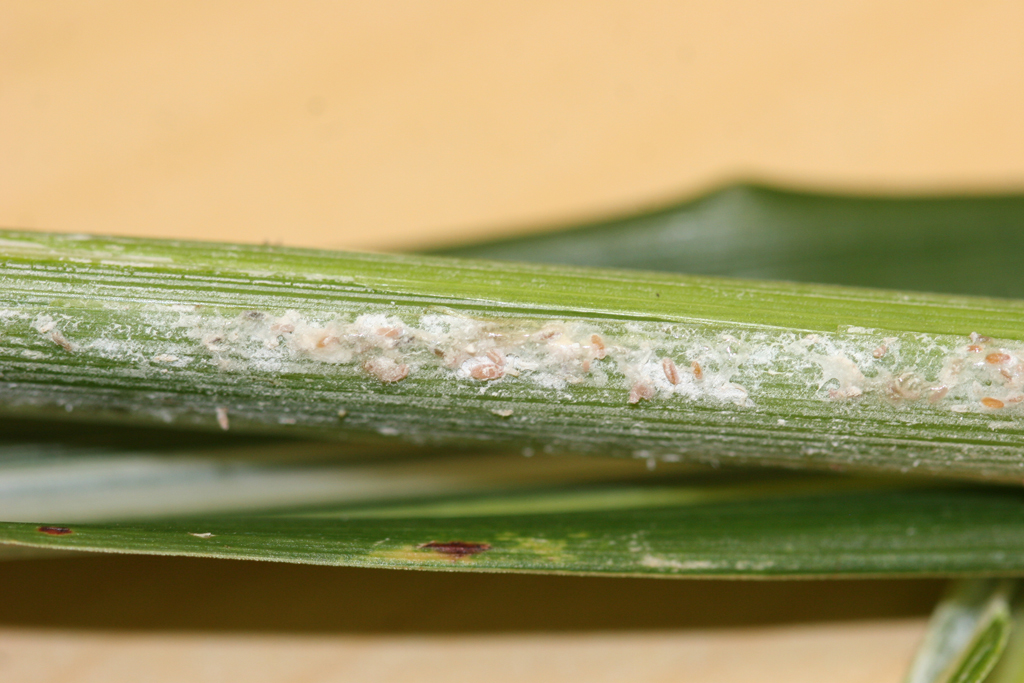Mealybug is a common problem with houseplants as are aphids, scale and spider mites. These are the most common pests that we see on our indoor plants.
Mealybugs are soft-bodied insects that are whitish in color and have piercing, sucking mouthparts. They insert their mouthparts into plant tissue and suck the juices.
They also secrete a substance called honeydew. This is a great symptom for you to look for in your houseplants. Sometimes you discover insect pests from their symptoms as opposed to finding the specific pests.
Specifically, if you look at your plants and see a shiny sticky substance, check around for either mealybugs, scale, or aphids. All of these are soft-bodied insects that secret honeydew.
Honeydew is secreted by plant-sucking insects. As the plant juices move through the body of the insect, the resulting excretion is the sticky honeydew.
Black sooty mold is a fungus that starts growing on the honeydew. We tend to see this on outdoor plants more than we do on indoor plants; however, if populations of insects are high, you may also see this.
Once you see the insect pest, determine your best strategy. Sucking insects can be controlled with a few methods.
Since they are sucking plant sap, they can be controlled with insecticides that are systemic, or that are taken up through the plant sap.
These insecticides are worked into the top layer of soil and watered in. When the insect inserts its mouthparts, it will also ingest the pesticide.
Another option is to remove them by hand – and of course, this option is for pest problems that aren’t gigantic! Some people take a cotton swab dipped in rubbing alcohol and physically remove them.
Pesticide sprays are sometimes effective. The problem with some of these pests is that they hunker down under the leaves and in the nooks and crannies of the plants. Therefore, if you don’t hit them with the appropriate spray, the young will keep growing.
I recommend a multi-pronged strategy if you get an infestation. I first start with hand picking as many as I can (or as many as I can tolerate spending time on!). Then I use a systemic insecticide that will help to hit the young that I miss picking off by hand.
The most important factor is this – don’t let them build populations. If they do, there may come a time when it’s appropriate to throw the plant out and start over. This is difficult if you have a plant with an emotional connection.
First and foremost, identify the pest causing the problem and eliminate it with the most appropriate tactic.
Pamela Corle-Bennett is the state master gardener volunteer coordinator and horticulture educator for Ohio State University Extension. Contact her by email at bennett.27@osu.edu.

